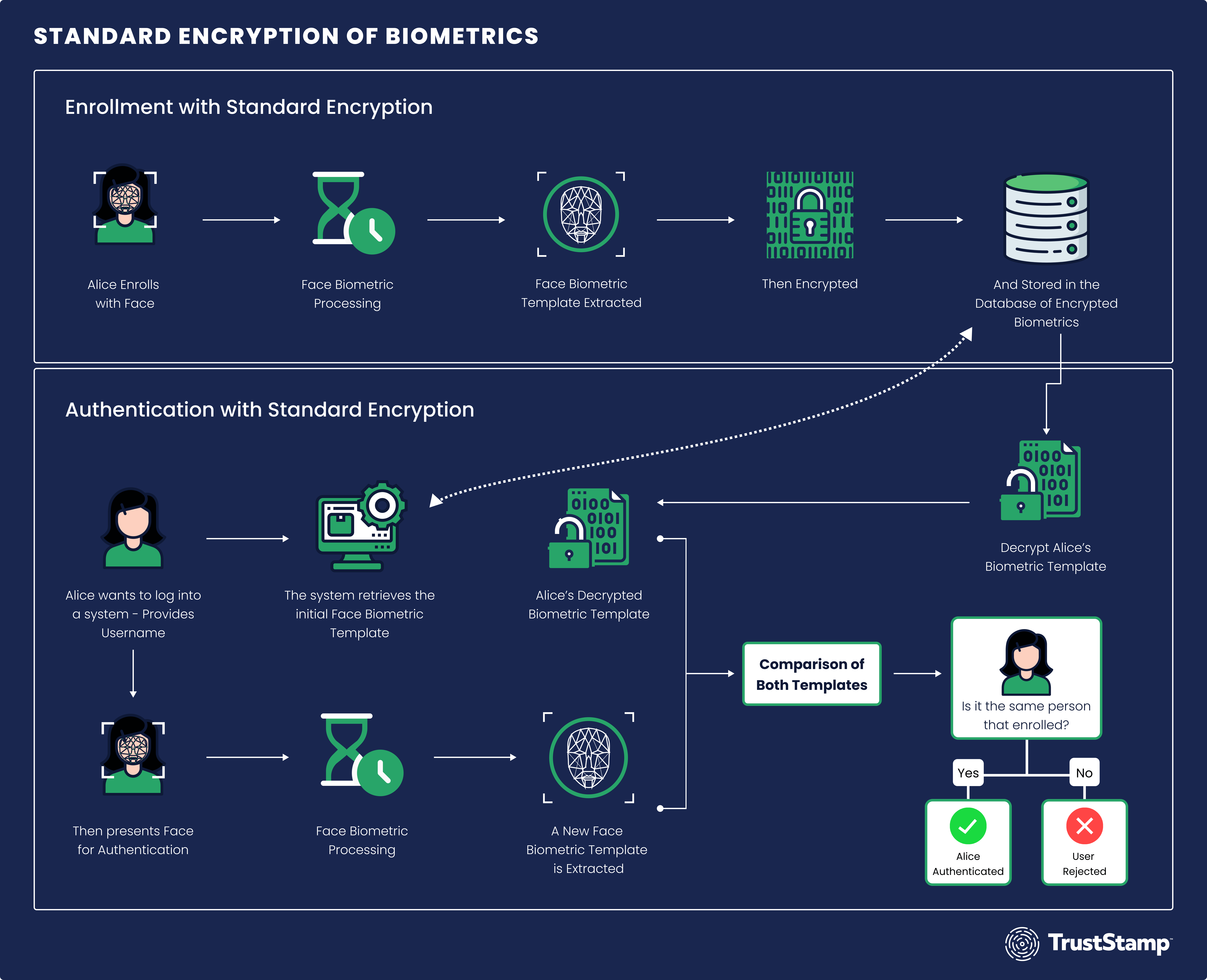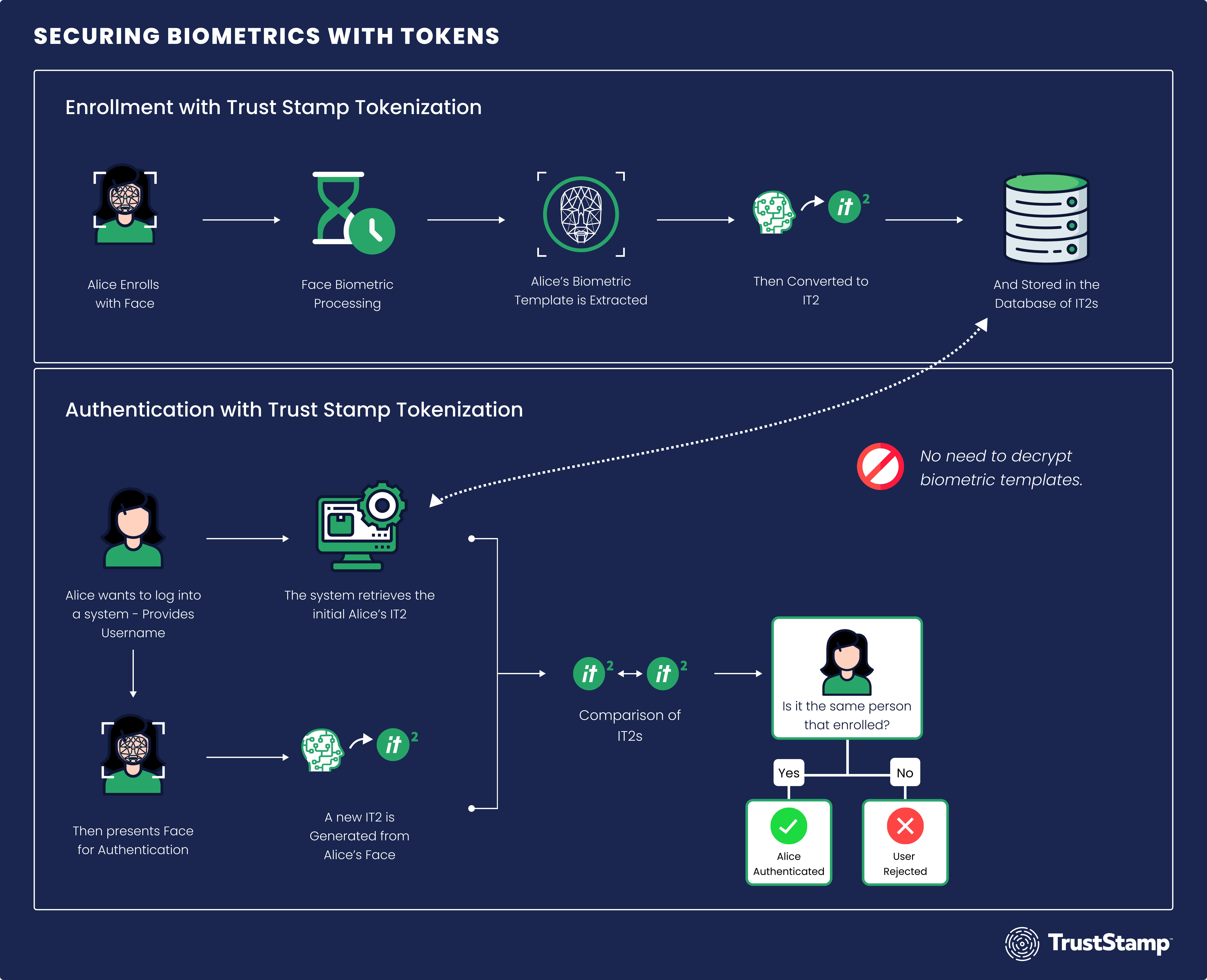With Web3 applications and digital wallets becoming more prevalent, the need for more secure and efficient identity verification methods becomes increasingly apparent. Facial biometrics has emerged as a powerful tool for confirming an individual’s identity. With the growing reliance on biometrics, concerns about the storage and security of this sensitive data have also arisen. In this blog post, we will discuss how combining facial biometrics with tokenization technology can address these concerns, ensuring a secure and robust identity verification process.
The Power of Facial Biometrics in Identity Verification
Facial biometric technology has gained significant traction in recent years, offering a user-friendly and secure method of identity verification. By analyzing an individual’s unique facial features, such as the distances between facial landmarks, this technology can accurately confirm a person’s identity. As a result, facial biometrics has found widespread adoption across various industries, including banking, government, and travel sectors.
Storing Biometric Information
The importance of secure storage for biometric data is highlighted by incidents such as the 2015 Office of Personnel Management (OPM) data breach in the United States. This breach resulted in the theft of sensitive personal information, including the fingerprints of 5.6 million federal employees. Biometric templates, such as fingerprints, which represent an individual’s unique biometric data, are often stored in encrypted form. However, encryption is not foolproof, and the risk of data breaches or unauthorized access remains. Because the original biometric data is encrypted and stored, there’s always a risk that a sophisticated attacker could decrypt the information if they gain access to the encryption keys. This makes the need for an alternative means to secure biometric data even more crucial.

Tokenization: Enhancing Security and Privacy in Biometric Storage
Tokenization offers a solution to these security concerns. This technology replaces sensitive biometric data with unique, irreversible tokens that have no exploitable meaning or value if extracted out of their context. These tokens can serve as the means to compare biometrics such as faces, fingerprints, and iris without the need for the original biometric data. The original biometric data is either deleted or securely stored in a separate database offline.
By transforming facial biometrics into a tokenized, irreversible form, the risk of unauthorized access or use of exfiltrated biometric data is significantly reduced. Even if a breach were to occur, the exposed tokens would be useless to malicious actors, as they cannot be reverse-engineered to reveal the original biometric data.
Tokenization: Enhancing Speed and Throughput
When a biometric system performs a one-to-many (1:N) search, it often involves extensive computational resources and time, particularly as the database expands with more users. The process can be compared to searching for a specific word in a book – the more pages the book has (i.e., the more biometric templates in the database), the longer it will take to find that word (or, in this case, match the biometric sample). Add encryption to the mix; while encryption keeps the biometric data secure, it adds an extra layer of complexity to the matching process, which can slow the system response time even more. This is particularly pronounced in systems with high throughput, where rapid authentication is vital for efficient operation.

Biometric tokenization, like that of Trust Stamp’s IT2, addresses these issues, which provide both performance and security. Searching across biometric tokens enables faster searches, as tokens are much smaller and simpler to compare than full biometric templates. Along with the feature where tokens cannot be reversed-engineered to retrieve the original biometric data, this technique enhances system performance without compromising the privacy and security of the biometric data, a win-win situation for both the user and the operator.
Exploring Alternative Biometric Storage Options: Homomorphic Encryption
While tokenization is a highly effective method for securing facial biometrics, it is worth noting that other emerging technologies hold promise as well. One such technology is homomorphic encryption, a cutting-edge cryptographic technique that enables computations to be performed directly on encrypted data without needing to decrypt it first.
Homomorphic encryption offers an attractive alternative to traditional encryption methods, as it allows for the secure processing of sensitive information without exposing the underlying data. This could prove invaluable in safeguarding biometric data, as it would enable companies to perform identity verification and other operations without the risk of exposing sensitive information.
However, despite its potential, homomorphic encryption is not yet ready for widespread adoption in production environments. The technology is still in the research and development phase, and its implementation is currently hindered by computational limitations and efficiency concerns. As homomorphic encryption continues to mature, it may eventually become a viable option for securing biometric data alongside tokenization.
Securing Biometric Data with Trust Stamp’s Advanced Biometric Tokens
Trust Stamp has responded to this security and privacy concern through an identity token, the Irreversibly Transformed Identity Token (IT2). The IT2 is an irreversible identity token that enables facial comparison as a token, not a biometric template or photo. The IT2 is a unique technology to help protect biometric templates and personal data in general. The IT2 enhances security and privacy by converting biometric data into a token that is of no use if it is leaked or stolen. An IT2 cannot be reversed to recover the original data, in this case, a face or a biometric template. As a result, the risks associated with the handling and storage of biometric data are mitigated, and the cost-benefit equation of any IT2-based biometric solution can be improved.
Contact Trust Stamp today to learn how our Trust Stamp IT2 tokens can increase the security, privacy, and performance of your biometric system.

